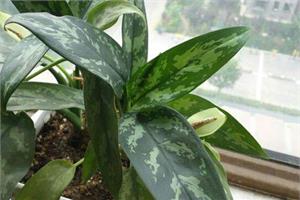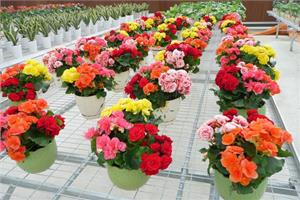Breeding skills and points for attention of Capsicum przewalskii
Many owners like to plant some green plants at home, on the one hand, we can watch, on the other hand, it can also play a role in purifying the air. Today, the editor is going to introduce a small ornamental household plant called milky pepper grass. Its leaves are heart-shaped and illuminated by metal. Next, let's take a look at its breeding skills and precautions.

The best propagation time is suitable for split propagation in spring and autumn, and the leaf insertion is between May and June.
The best growing soil: Zanthoxylum nipponense requires loose, fertile and well-drained soil, which can be mixed with river sand, mud fabric and rotten leaf soil.
Growth humidity requirements: the milky pepper grass likes the humid climate environment, and the relative air temperature of the growing environment is 60-75%.
The best growth temperature: the optimum growth temperature is 18 ℃ ~ 30 ℃, avoid cold frost, the overwintering temperature needs to be kept above 10 ℃, when the winter temperature drops below 4 ℃, it will go into dormancy. If the ambient temperature is close to 0 ℃, it will die of frostbite.
The best growth light: paprika bogey direct sunlight, it is appropriate to grow in the semi-shade.
Points for attention in culturing Capsicum przewalskii
Fertilizer and water requirements:
Capsicum przewalskii has a lot of requirements for fertilizer and water, but it is most afraid of random fertilization, concentrated fertilizer and partial application of nitrogen, phosphorus and potassium, and it is required to follow the principle of "frequent application of light fertilizer, less and more times, and complete nutrition".
Spring, summer and autumn:
These two seasons are its peak growing season. Fertilizer and water management circulates in the order of "Huabao"-- "Huabao"-- clear water-- "Huabao"-- "Huabao"-- "Huabao" at least twice a week. The interval period is about 1-4 days for outdoor maintenance, shorter intervals during sunny days or high temperatures, longer intervals or no watering during rainy days or low temperatures. Put it in indoor maintenance for 2-6 days. Watering time should be arranged as early as possible when the temperature is low in the morning. Summer is watered in the morning or evening when the temperature is low, and plants are often sprayed.
Winter:
During the dormant period in winter, the main task is to control fertilizer and water. Fertilizer and water management circulates in the order of "Huabao"-clear water-clear water-"Huabao"-clear water-clear water, with an interval of about 7 to 10 days. Watering time is arranged as far as possible when the temperature is high at noon on a sunny day.
Pruning essentials:
When the plant height is about 10 cm, it can be properly coring to promote the lateral branches to germinate and keep the plant shape plump. If the plant shape is already too high, it can also be trimmed, which can make the plant compact and plump.
Replacement of basin soil:
For the old basin that is re-used, it must be soaked in potassium permanganate 1000 times solution for more than half an hour, then rinse with clean water and dry for use. The new basin can be used directly. Generally, first use a smaller flowerpot (9cm plastic pot) to plant, first cushion the appropriate substrate at the bottom of the cup, and then move the sieve seedlings into the cup, the seedlings can be appropriately planted deeper, slightly on the base of the flat plant, 1 ball / pot; the matrix is loose and tight moderately, filled with 9 minutes of the cup, gently vibrate the basin soil, and pour semi-permeable or surface water with fixed roots.
Main points of reproduction:
Capsicum przewalskii is often propagated by cuttings and plantlets.
Cuttings: from April to May, select strong top branches, about 5cm as cuttings, and keep 2 leaves in the upper part of the cuttings. After the cut is dried, insert them into the wet sand bed. You can also insert leaves, cut the leaves with petioles with a knife, dry them slightly, then insert them obliquely on the sand bed, and take root in 10-15 days. In a greenhouse with temperature control equipment, it can be carried out all year round.
Ramet: mainly used for the reproduction of colored leaf varieties. The basin soil can be made of rotten leaf soil, peat soil and part of perlite or sand, and an appropriate amount of base fertilizer is added. During the growing period, topdressing should be applied once a month, and watering should be controlled in winter with the water that has been released into the pool for 2 days. The change of temperature directly affects the color of leaves, the optimum temperature in winter is 18-20 ℃ for colored leaves and about 15 ℃ for green leaves. If you are afraid of heat in hot summer, you can spray water under the shade to cool down, but it should be noted that overheating and humidity will cause stems and leaves to blacken and rot. Place plenty of light in winter and avoid direct sunlight in summer. Change the basin every 2-3 years.
Pepper grass cultivation substrate requires good air permeability, good water retention organic substrate, such as peat soil plus perlite or vermiculite, the proportion is about 6:1, avoid too much water in the substrate, generally maintain 40-60% water content in the substrate.
Usually placed in a bright indoor or open-air shade, the optimum temperature is 20-26 ℃, and the winter temperature is above 5 ℃. The leaves are often sprayed with water to maintain high air humidity. It can also be properly trimmed or transplanted in the courtyard for viewing after a period of time.
Pest control:
The disease of Zanthoxylum bungeanum is less, mainly caused by ringspot virus disease, the damaged plants are dwarfed and the leaves are twisted, which can be sprayed with the same amount of Bordeaux solution. In addition, root rot disease and scab disease were sprayed with 1000 times of carbendazim wettable powder.
Insect pests are occasionally harmed by scale insects and slugs, which should be prevented and controlled in time.
Hydroponic culture of paprika grass
Aquaculture water culture and soil culture of paprika grass:
Water culture of paprika grass: pepper grass is an excellent living model in water culture, each plant has 4-5 leaves, it is very easy to adapt to the water environment, will not decay, and is easy to grow. Like warm and humid semi-shady environment, not resistant to high temperature, avoid direct sunlight; resistant to drought, watering should not be too much, especially in autumn and winter to reduce watering. If the air is dry, you can spray more water to the leaves and avoid frost.
Pepper grass soil culture: pepper grass cultivation substrate requires good air permeability, good water retention organic substrate, such as peat soil plus perlite or vermiculite, the proportion is about 6:1, avoid too much water in the cultivation substrate, generally maintain 40-60% water content in the cultivation substrate.
Usually placed in a bright indoor or open-air shade, the optimum temperature is 20-26 ℃, and the winter temperature is above 5 ℃. The leaves are often sprayed with water to maintain high air humidity. It can also be properly trimmed or transplanted in the courtyard for viewing after a period of time.
The above is the relevant introduction of this article, I believe you have a simple understanding of this after reading it, if necessary, you can continue to pay attention to the No. 1 home network for more information.
- Prev

The breeding conditions of the Silver Emperor points for attention of the Silver Emperor
The breeding conditions of the Silver Emperor points for attention of the Silver Emperor
- Next

What is the value of Rieger Begonia in its growing environment
What is the value of Rieger Begonia in its growing environment
Related
- Wuhan Hospital Iron Tree Blooming Result Was Instantly Frightened by the Gardener Master
- Which variety of camellia is the most fragrant and best? Which one do you like best?
- What is the small blue coat, the breeding methods and matters needing attention of the succulent plant
- Dormancy time and maintenance management of succulent plants during dormancy
- Minas succulent how to raise, Minas succulent plant pictures
- What are the varieties of winter succulent plants
- How to raise succulent plants in twelve rolls? let's take a look at some experience of breeding twelve rolls.
- Attention should be paid to water control for succulent plants during dormant period (winter and summer)
- Watering experience of twelve rolls of succulent plants
- Techniques for fertilizing succulent plants. An article will let you know how to fertilize succulent plants.

